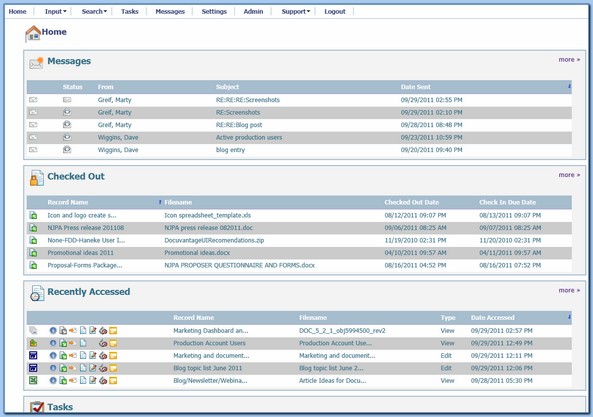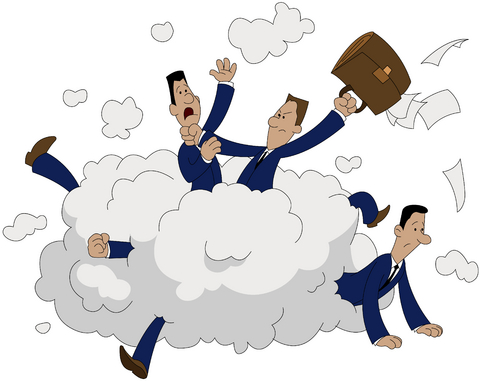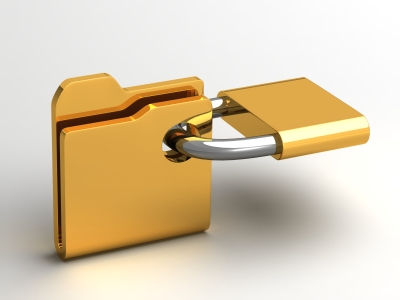You probably don’t want your employees to be wasting time on things like…
Your Document Management Knowledge Center
At first glance, the title may be puzzling. While one can see the relationship between marketing, creativity and collaboration, where does document management come in?
In today’s world, “working from home” is no longer synonymous with inactivity and loss of productivity. In fact, more than 34 million people in the U.S. telecommute at least one to four days a week and according to IT analytics firm Forrester Research, telecommuting ranks will expand to 63 million by 2016*. The vast majority of telecommuters report spending more time actually being productive versus commuting or combating daily office distractions.
The 3 Biggest Risks Your Organization Faces and How Web-Based Document Management Insures Against Them
No doubt by now you’ve heard the growing buzz about cloud computing, and the subset of online document management, and you’re excited by the opportunity to shed costly in-house IT infrastructure and resources.
But do you still have security concerns? You want to jump on the bandwagon but you’re worried about moving your company’s most sensitive information outside your office walls. You may still be wondering:
It’s funny but we usually think about collaboration as a good thing. Employees working together to solve problems and to move your business forward is a goal that separates successful organizations from unsuccessful organizations.
As I read more and more about the leaking of US government documents, I can’t help but wonder what type of security was in place. In recent times, WikiLeaks has gained access to 400,000 documents detailing the Iraq war and more than 250,000 documents from the state department. Given the volume of documents, it seems doubtful that the documents were stored in a document management system with multiple levels of security permissions.
Sorting through all this information to find useful or relevant information is what separates out the productive people from the overwhelmed. It separates out the successful from the frustrated and it sometimes it even separates the happy people from the sad people.
Think about your day.
• How many e-mails did you receive today? How many of those were worthwhile?
• How many calls did you get today? Were any of them productive?
• How many meetings were you in? Did you want to be in any of them?
• How many web pages did you read? Did you learn anything useful?
Now look at your office.
• How many piles of paper do you have? Do you know what’s in them?
• How many documents are you supposed to read today? Are they right in front of you?
• How many deadlines do you have? Are you prepared to meet them?
This is a problem in society. This is the same problem at work. Too much! Too much information and most of it is not relevant.
So how do you solve this problem in both your personal life and your work life?
Turn off the autopilot and take charge of your life. Don’t let the information drive you. Instead use the relevant information to get to your destination. Choose where you want to go; choose what you want to accomplish. Then delegate, automate and ignore the rest!
First let’s discuss your day.
How often do you check your e-mail? It does not matter what the answer is; both you and I know it’s way too often. Will the world end if you only checked it once or twice a day? Do you feel the need to respond to all e-mails? How much time does that take? If you feel that you must respond to all e-mails, craft some canned responses that you can copy and paste into a response. Over time you can answer a majority of your e-mails this way.
Phone calls
You do not have to answer the phone. Use caller id to your advantage. If you know you need to take the call, then do so. But when you answer, thank the other person for calling. Then let them know you were busy, but saw it was them so you picked up the phone. This makes them feel special. It also allows you to get right to the point on the call and not waste time.
For the calls that go into voice mail, call them back after hours. You can leave a detailed message in under two minutes that would answer any question. This eliminates long conversations and at the same time lets you be responsive.
Meetings
Just say no. If you have to go to a meeting, make sure there is an agenda. Keep everyone on track in the meeting. And here’s the hard part, leave if it’s not productive. You do not have to be the boss to do this. If questioned by your boss about your new practice, explain that it’s all about getting things done and being productive.
The Internet
What a time sink this has become. We think of the Internet as a place to get information. Instead think of it as a dangerous destination similar to the island in Greek Mythology where the Sirens sang their songs. For those not familiar with the Sirens, they were a group of creatures who looked like beautiful women, but were really man-eating beasts. They sat on the shore and sang with voices so beautiful and compelling that anyone who heard their song became absolutely mesmerized. So mesmerized, in fact, that they became obsessed with reaching the shore to get closer to the sound.
And then the Sirens would eat them.
This describes the Internet perfectly. We get so mesmerized by pages upon pages of information that we don’t notice that our time was eaten by the Internet beast. If you use the Internet, schedule time to use it and please, please set an alarm or alert to remind you to stop!!!
Now let’s look at your office.
Paper
The sheer volume of documents that people touch or read in a day is unbelievable. Worse yet, what do most people do with these documents? They put them in piles for later use or they file them never to be found again. Think about how much time you waste looking at the same documents over and over again, or looking for a specific document. Stop using paper! With the right online document management systems you can capture, store and retrieve documents instantaneously. This eliminates the time spend sorting through piles and file cabinets. If you don’t think you spend a lot of time dealing with paper; for one day, just jot down each piece of paper you touch. You will be horrified!
Deadlines
The problem with deadlines is not that work has to be completed by a certain time; it’s that you have way too much competing for your time and attention. If you streamline your life and your work, you will find that you can meet your deadlines much, much easier.
In the end, it’s all about time. The less time you waste, the more time you have to do what really matters. Don’t waste time listening to “too much information” and don’t waste time sorting through irrelevant information.
What matters to you might be spending more time with your loved ones or getting more done at work. No matter what is important to you, using your time wisely will turn you into one of the productive, successful and happy people that we all aspire to be.
Interested in improving your organizations efficiency? Learn more about Online Document Management.
Far from being a safeguard, uncontrolled duplication of records is expensive and risky.
Benefits of Electronic Records
Digitized or electronic documents require less physical storage, they’re easily searchable, and backup for business continuity can be automated. Although many organizations scan paper records as they arrive, most haven’t implemented a disposition policy to destroy the paper. Today, most documents begin life in electronic format, yet many people continue to print hard copies and add them to paper files.
It’s estimated that the volume of information generated by businesses is growing by 60 per cent each year. At that rate, it’s no longer feasible to keep every document forever, and it’s important to minimize duplication and adhere to legal retention requirements.
Multiple copies lead to unnecessary costs and risks associated with:
• Storage – multiple copies fill premium office space, off-site warehouses, removable media, and network hard drives.
• Mismanagement – multiple copies are more difficult to control, file and retrieve. They increase the likelihood of security breaches or inappropriate disposal. This can result in fines and other sanctions for non-compliance with regulatory requirements; and in the loss of competitive advantage if intellectual property or commercially valuable business intelligence is compromised.
• Litigation – multiple copies mean more places to search during the discovery phase (increasing time and costs). It may also raise questions about the evidential weight of records.
• Business Continuity – multiple copies make it more difficult to identify the subset of ‘vital records’ which must be protected at all costs. This can result in a higher risk of accidental loss, deletion or inaccessibility. Liability insurers are increasingly considering retention policies and discovery-preparedness in their underwriting decisions. Poorly managed records can affect the cost or availability of insurance coverage.
Why then are companies investing time and money to maintain parallel filing systems?
Some companies aren’t sure whether electronic records are legally admissible; or whether paper records carry greater evidential weight. Others are doubtful of the quality and reliability of scanned documents. Many are uncertain about the required retention periods for paper records, email and digital documents.
A records management program can clarify these questions and alleviate concerns – allowing an organization to maximize the value of its business information and minimize the associated cost and risks.
The Solution – a Records Management Program
Gaining control over corporate information can seem daunting. Yet it’s absolutely essential for regulatory compliance. A records management program is a key component to reduce the complexity and cost of any GRC (governance, risk management and compliance) initiative.
Reducing the volume of paper records that must be stored and managed is the first step to moving fully into an electronic working environment. If you don’t take the plunge today, it’ll be twice as challenging next year.
A records management program should include:
• An information management policy which sets out the overarching framework of rules and responsibilities for controlling corporate information. It demonstrates to a court of law that information management is part of normal business operations.
• A classification scheme that identifies the different types of records created or received by the organization. It groups similar records together into categories that are easier to find, use and manage. The classification scheme can be used to indicate which categories of records are suitable for scanning (and which are not), based on the regulatory requirements that apply to particular types of documents.
• A retention policy that’s developed through an analysis of the company’s specific legal obligations, business needs for information to support daily operations, and the interests of any additional stakeholders.
• The secure disposal of records should be carried out on a regular schedule, in accordance with an approved procedure. Local and international case law indicates that courts will approve routine destruction of records in accordance with established procedures. Developing a security policy helps to protect the integrity of corporate information and reduce the risk of a challenge to its authenticity.
Legal Admissibility
Legal recognition and requirements for electronic records are contained in the Electronic Transactions Law and the Evidence Law. Your records management program should provide a framework of policies and procedures to maximize the evidential weight of scanned images, and reduce the risks associated with destruction of paper files.
Where records are required for legal or regulatory purposes, an electronic record is acceptable if it is maintained in an accessible, perceivable form. It must also be accompanied by contextual information (metadata) which substantiates the provenance of the record – confirming the time, place and the person(s) responsible for creating or receiving the record.
Companies should also examine their specific legal or statutory provisions to identify any requirements to keep records in their “original form”. Such requirements can be met by a record that was first generated as an electronic record. If a document was originally a paper record, some industries require that the paper record is safeguarded and retained for a certain number of years.
Organizations should seek legal advice with regard to the types of documents most likely to be disputed in court, and assess the risks associated with maintaining or destroying the original paper records that have been scanned.
Questions about the quality and reliability of scanned images can be addressed by implementing procedures and technical standards for the conversion process, for quality control and IT system administration. It’s necessary to demonstrate that the image is an accurate representation of the source document via:
a) clearly defining the conversion procedure, which explains any changes applied to the image (e.g. conversion from color to black-and-white, de-skewing, cropping, etc.),
b) capturing and managing the image in a system that can control and track its use and prevent any subsequent modification (establishing an audit trail), and
c) maintaining and operating the system properly.
An audit trail of activity for records, users and systems administrators is important for proving authenticity and demonstrating the record’s ongoing integrity.
As a critical corporate asset, information should also be addressed in plans for business continuity and disaster recovery. The classification scheme can be used to identify categories of records that are vital for ongoing operations. Appropriate strategies can then be devised to ensure the backup and long-term accessibility of those records.
Conclusions
Electronic records offer many benefits for business efficiency. However, they may also expose companies to significant risks, if they’re not pro-actively managed.
A robust records management program combined with an electronic document and records management application, with defined policies and implemented procedures, reduces the costs and risks associated with managing corporate information. It can be used to determine whether paper records are suitable for scanning into digital formats, and to enable the disposal of original hard copies – generating a range of potential savings for the organization, and mitigating the risks associated with retaining multiple, uncontrolled copies.
Bob Leonard, our guest blogger, is the managing director of acSellerant specializing in online, inbound, content and social media marketing for SMB IT providers.
When it comes to in-house security, there are endless measures to take in order to prepare for a disaster or a computer environment threat:








